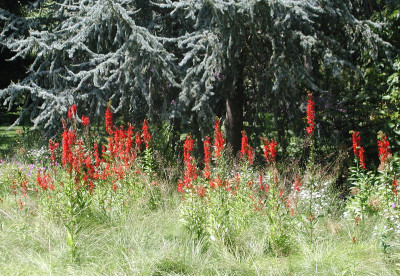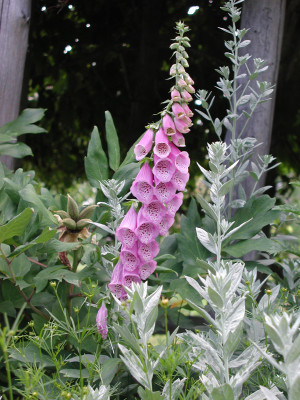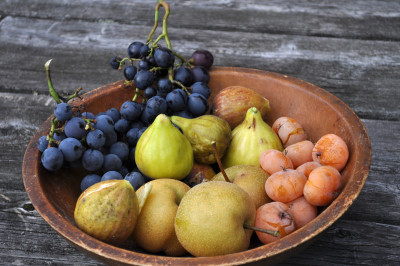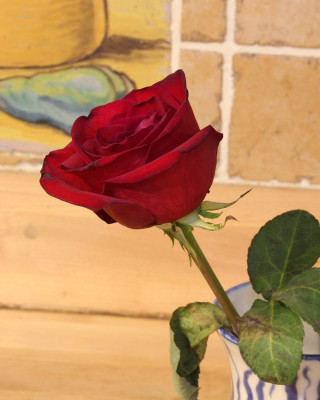SOUTHERN FRANCE, IN SCENT AND SIGHT
Heaven Scent Flower
I trace the origin of my present obsession with growing carnations – big, fat, fragrant carnations (Dianthus caryophyllus) – to the movie, Jean de Florette, that I saw back in 1986. Not that I aspire to labor under the weight of hauling water long distances to care for my plants, as did Ugolin. And not that I’m hoping to get good money selling the cut flowers at a local market.
Actually, my only memories of the film are of the charming countryside of Provence, of Ugolin crouching over the plants and lavishing them with care, and of the pretty pink flowers. Come to think of it, I’m not sure Ugolin’s carnations even got as far as the flowering stage. Anyway, in my mind’s eye I see those pink blossoms and smell their spicy perfume.
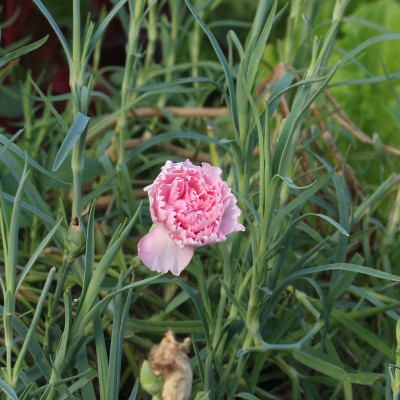
With good soil and ample water, my carnations have an easier time of it that did Ugolin’s. Too easy, perhaps. Carnations don’t need or like overly rich or wet soil. When it came time to plant out my seedlings, I recalled those scenes in Jean de Florette. The ledge of soil held up by a stone retaining wall along the south side of my house provide the good soil drainage and sunlight that suits carnations. Lavender, another Mediterranean plant growing on a wall nearby, will help make the carnations feel right at home.
The biggest threat to my carnations is winter cold and wetness. And even then, these carnations, although technically perennials, are typically short-live perennials that peter out after a couple of years. Luckily, they are easy to grow from seed or root from cuttings.
Like Ugolin, I’ll soon be carefully nurturing some new seedlings. Whether planting, picking, taking cuttings, or preparing them for winter, I’ll also be hunched over my carnations and lavishing them with care, in the months ahead. It’s worth it, for the pastel flowers, and especially for the flowers’ heavenly scent.
And Some Things for the Other Senses
What’s the attraction of southern Europe? The climate there is so different from here in the Wallkill River valley, yet I am attracted to and keep trying to grow Mediterranean plants such as carnations, figs, pomegranates, lavender, black mulberry, and rosemary. All these plants thrive in dry summers and cool, not frigid, winters; minus 20°F is not an uncommon low winter temperature here.
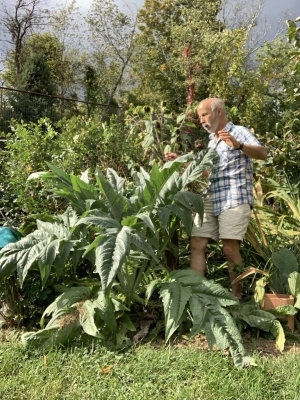
Cardoon, last year
Add to the roster here artichoke and cardoon, two more Mediterranean plants that I set out last spring, for the artichoke, the spring before for the cardoon. (The very mild temperatures of the previous winter let the cardoons survive their first winter outdoors.) That was after sowing each plant in later summer and having it winter in the very cool temperatures of my greenhouse, which provided the vernalization the plants need to flower their first season outdoors.
Both cardoon and artichoke grow as a whorl of spiny leaves from the center of which rises a main flower stalk with smaller flower stalks branching off lower down. Like carnations, they are short-lived perennials. Like carnations, they are easily propagated, in this case by seed or by offshoots that grow at the base of the plant
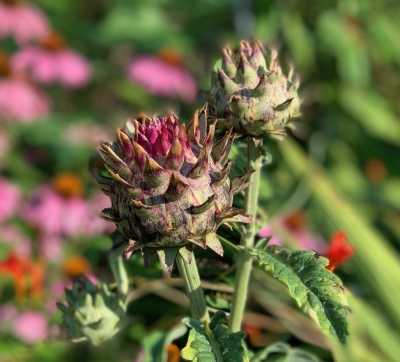
Cardoon in bud
Like carnations, the biggest threat to artichokes and cardoons around here is winter wetness and, especially, cold. Winter cold will assuredly kill them unless they are protected in some way. To that end, late last fall, I cut down the plants and covered each with a large, inverted flowerpot in which and on which piled leaves for insulation.
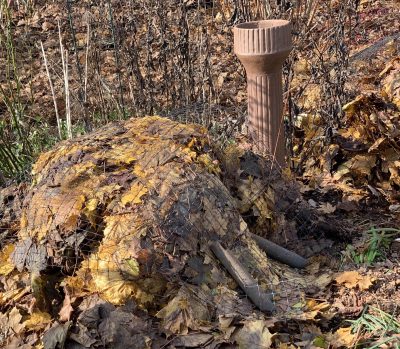
Cardoon & artichoke protected for winter
During the warm spell a week or so ago, I pulled back the leaves and uncovered the plants. Cardoon leaves had sprouted more than a foot high within their winter home! Without light, the leafy stalks were ghostly white.

Cardoon, after winter
That’s okay; cardoon is sometimes purposely blanched to make its flavor more mild. A few days of light will green them up. That’s okay too; I’m growing cardoon for its bold visual presence — last year the plants leaves formed a 3-foot-high, blue-green, mound of spiny leaves up the center of which rose flower stalks at the top of which opened blue flowers resembling enormous thistles.
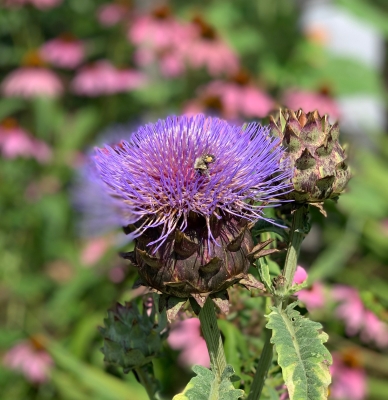
Cardoon flower
As for the artichokes: Not a sign of life. Perhaps winter cold or moisture did them in. Perhaps mice lunched on the roots. Perhaps there’s life beneath the ground, still to awaken. I’ll keep my fingers crossed.


